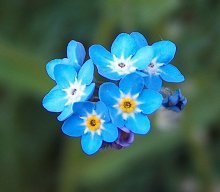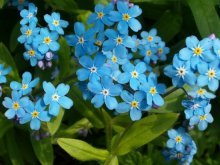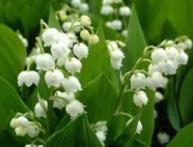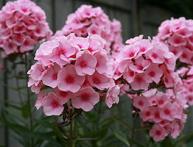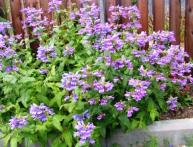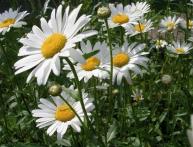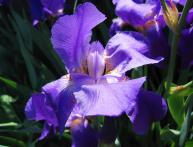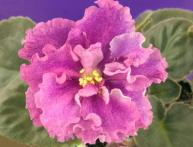Garden forget-me-not: modest beauty
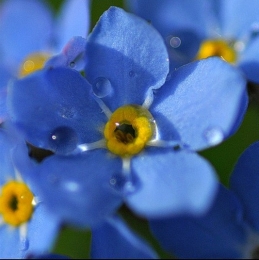
Forget-me-not is a plant belonging to the Borachnikov family. There are about 50 species of this beautiful plant in the wild today. In order to meet a beautiful forget-me-not on your site, you need to take care of the proper cultivation and care of this marvelous flower.
Content:
Description of the plant
Garden forget-me-not usually has blue color with a beautiful yellow eye. Sometimes the eye can be white or pink. The flowers are collected in a bunch. Flowering occurs within 3-4 weeks. If it is cool, the process may take longer. Spring frosts, if they are not severe, are tolerated very well by forget-me-nots.
Forget-me-not in landscape design
Despite the modesty of this plant, garden forget-me-not is quite often used by landscape designers. Often, it is located in so-called clearings on the lawn. Also, it is often used in dense vegetation to diversify the color scheme. After all, forget-me-not grows well among thick grass.
Recently, Moorish lawns can be found on personal plots. Without the use of forget-me-nots, such a lawn practically cannot exist. The composition completely loses all its unsurpassed appearance. The decoration of borders plays an important role for forget-me-nots. Quite often along the paths there are forget-me-nots with spring bulbous plants.
As for spring landscape design using forget-me-nots, it is best to use them with tulips or daffodils.
How to care for forget-me-nots in your own garden?
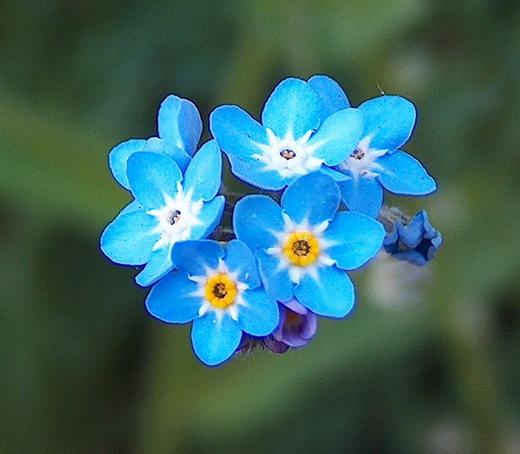
In order for the garden forget-me-not to please the eye and create a unique landscape design, you need to take care proper care when growing.
Basic moments:
- Location. Garden forget-me-not grows well both in the shade and on the surface where the sun constantly falls. However, where there is shade, forget-me-nots bloom longer. In a shaded area, the flowers take on a bright blue hue.
- Earth. The humble forget-me-not grows happily in moist soil. It does not require too nutritious soil, but forget-me-not will not want to be on sand with poor indicators.
- Amount of moisture. As for watering, the plant practically does not require it, especially if it is to grow in a dark place. At the end of spring, it needs enough moisture in the soil. However, it is necessary to monitor the forget-me-not plant and if there are noticeable dull leaves, then in this case it is necessary to water it.
- Winter period. Forget-me-not is not afraid to spend the winter. Moreover, in a zone with a mild climate, she is not afraid of anything at all. In general, no special arrangements are required.
- Reproduction. Garden forget-me-not is also unpretentious in the matter of reproduction. There is no need to sow forget-me-nots every year, especially since they reproduce by seeds. The plant will do everything itself using the self-seeding method.
How to sow forget-me-nots?
If there is no forget-me-not on the site, but you really want it to please the eye, you need to purchase seeds and start sowing in July. Moreover, it is necessary to pre-prepare special beds.To prepare the soil, you need to dig it several times and fertilize it. In particular, it is necessary to add peat, and then compact the soil a little. After the seeds are sown, you need to sprinkle the soil a little with sand.
Next, you need to constantly ensure that the soil is slightly moist. In about 3 weeks you can wait new sunrises. In the first winter, it is necessary to mulch young forget-me-nots. This method involves covering the soil with peat chips or leaves.
Pests of forget-me-nots
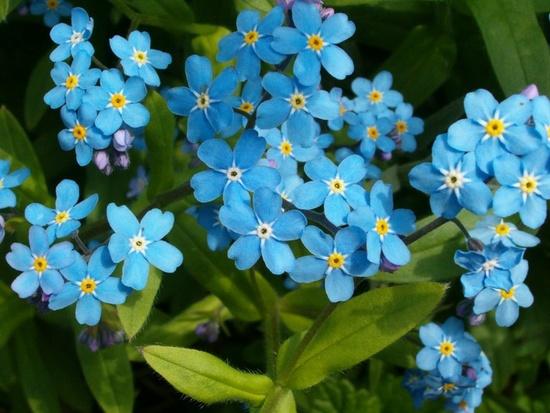
Despite the unpretentiousness of the plant and the fact that people really like it, various pests like it, which as a result leads to the appearance of diseases.
The main ailment of the plant can be root and gray rot. Also, downy mildew may appear on the plant. Aphids will also not bypass forget-me-nots, and various species can harm them. Also, the following can harm garden forget-me-nots:
- Cruciferous flea beetles
- Slugs of different types
- Scoops
However, in order to prevent the occurrence root rot, preventive measures can be taken. In particular, you can use the drug "Hom". It must be used per 10 liters of ordinary water, 40 grams of the drug. Its consumption is 2 liters of ready-made solution per 10 sq.m. The solution must be used after 10 days have passed after germination. Anti-dew (powdery) agents are also used. It could be:
- Topaz
- Spark
- Score
It is very important to prevent the appearance of pests on the plant in time, so that later the forget-me-not will be pleasing to the eye.
Video about making a bouquet of forget-me-nots, violets and burdocks:
Interesting information about the vegetable garden

